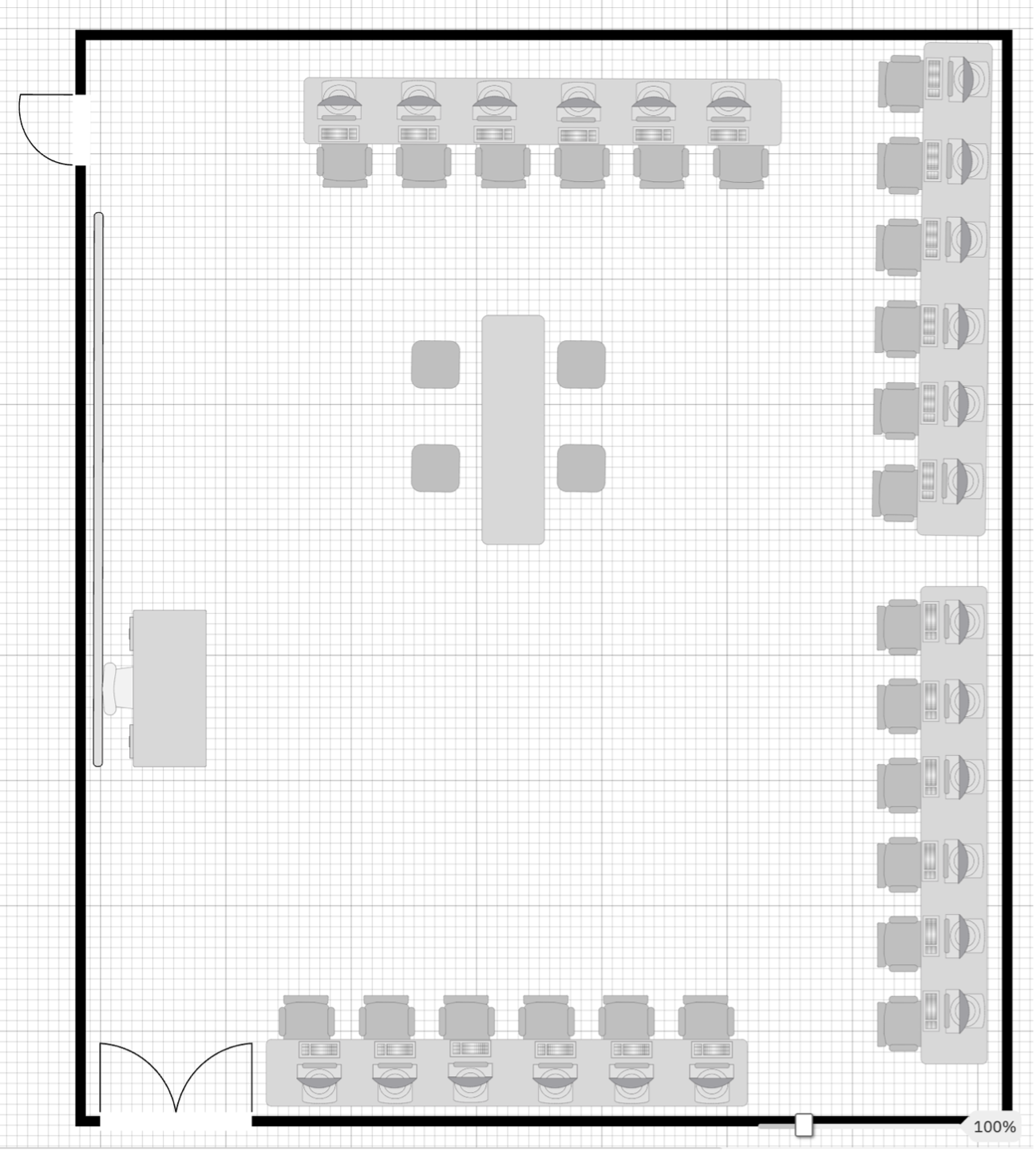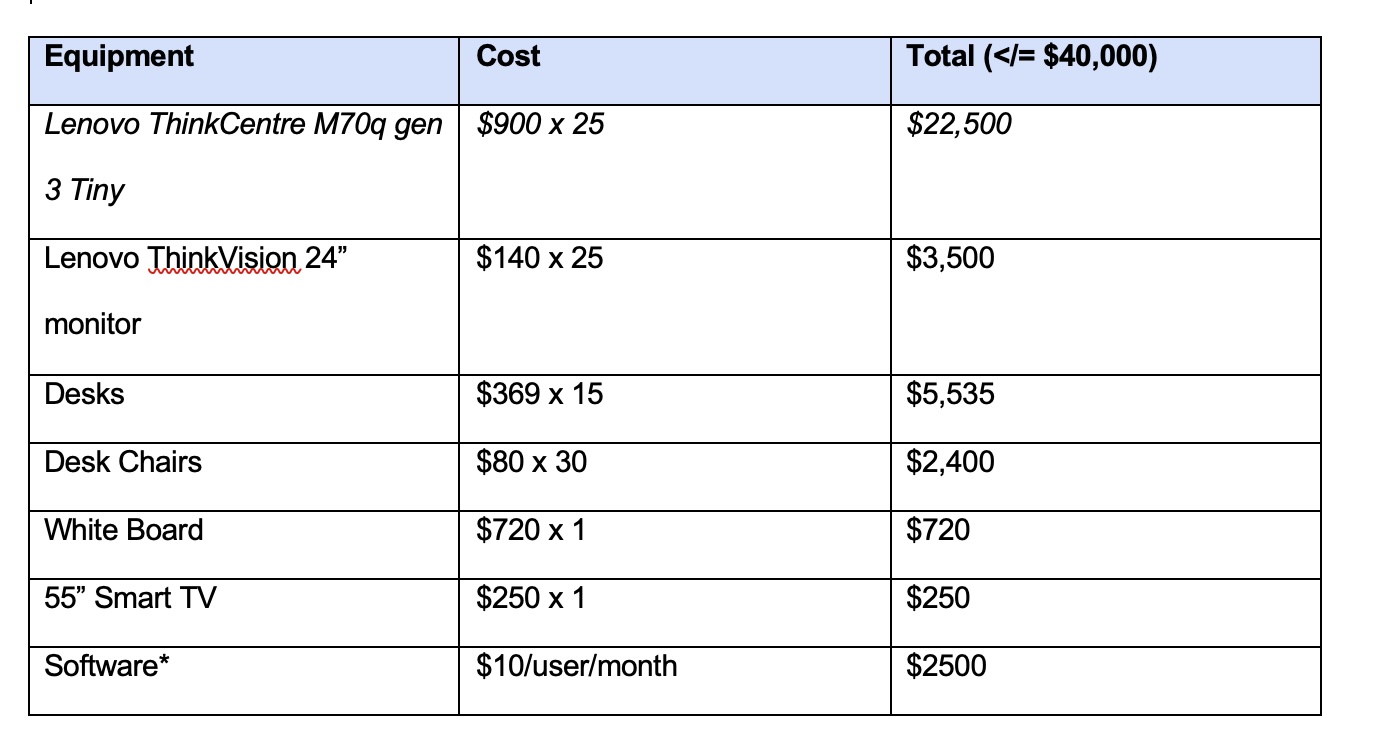My Dream Computer Lab
Last week I was offered $40,000 to build my dream computer lab. Thanks to a grant by the Department of Education for the State of New Jersey, I was able to secure $40,000 to build a computer lab for my AP and cybersecurity courses. If you are in NJ and teach Computer Science here is a link to the grant for you to apply Expanding Computer Science High School Courses
Why A Computer Lab
Simply put, the devices the students were given are commodity devices that address the needs of the majority of students. Programmers have very specific needs that the 1:1 devices just simply do not provide. In a 1:1 situation, you cannot hand students a second device. You need to have a lab for them to use.
There are three main issues. The first being that a compiler needs to be installed on the computer. Specifically Java. With all the issues that come with Java (CISA), isolating any security issues in a lab is the most prudent thing.
Second, running computer security labs in a more controlled but open environment is easier to protect the internal network, as well as the students from doing anything they shouldn’t be. Simply, student devices are heavily locked down. A lab can be secure with more apps and services opened due to the network isolation that can be configured. Partnering with CISA, they will even help with the securing of the school networks (CISA Online Toolkit).
Third, the lab offers a more conducive environment to programming. Having dedicated monitors, keyboards, and comfortable furniture allows students to be more productive.
Who Is This For
Obviously, this is for me. Finally getting a classroom after 12 years of teaching is one great reason. Unselfishly, this is a lab for the Computer Science students to use for all classes, not just mine. Due to the network isolation and more powerful workstations, other programming and engineering classes can have their software installed to be used.
Layout
Below is my dream layout. Obviously, finding a room in an old high school with the right network connections is difficult. I know it can be done with some strongly worded language.

Essentially, you want to create two spaces. A working space and a learning space. Sitting the computers around the perimeter allows the teacher to see all the screens. It also allows students to turn around and watch my screen, projector, or examples without anything blocking them. In the center there is a table and some chairs for group discussions if needed.
There could be more, but when you factor in furniture, costs for infrastructure become more than the technology. For this reason, I want to keep a minimalist approach.
Equipment
Choosing the equipment is a challenge due to the requirements set forth by IT, the district, and supplier contracts. The district may have a favorite supplier that does not have exactly what you want. IT will most likely determine the brand due to component repairs. Below is a very basic table that describes sample costs.
For the computer I am choosing a computer with an upgraded processor and RAM. Programming does not require that much, but it does require an operating system with the ability to run the JAVA compiler. I am choosing a desktop because I will pair it with a large monitor. An x64 based processor and 16 GB of RAM should be sufficient.
The monitor is the biggest, reasonably priced “office use” monitor I can find. The lab is not an graphic studio, so general purpose monitors are fine.
Desks are general computer desks. I prefer open concept, but beware this part is more expensive than you think.
Chairs are generic office swivel chairs.
Our school will not put in any more projectors. Smart TVs are cheaper and have the ability to project. This is a school decision.
I’ve included one year of my cyber range software for my class.
This all leaves about $5,000 for wiring, labor, and anything else that is missing. As you can see the furniture is a large part of the budget.

Final Thoughts
Getting the school to outlay money is always a tricky endeavor. What I learned in the process is that it is easier if there is a grant, or demonstrable skill that will differentiate the school from others. I proposed a cybersecurity course before anyone thought of it. With that proposal I showed that with some software, students can get community college credit as well as industry certificates.
